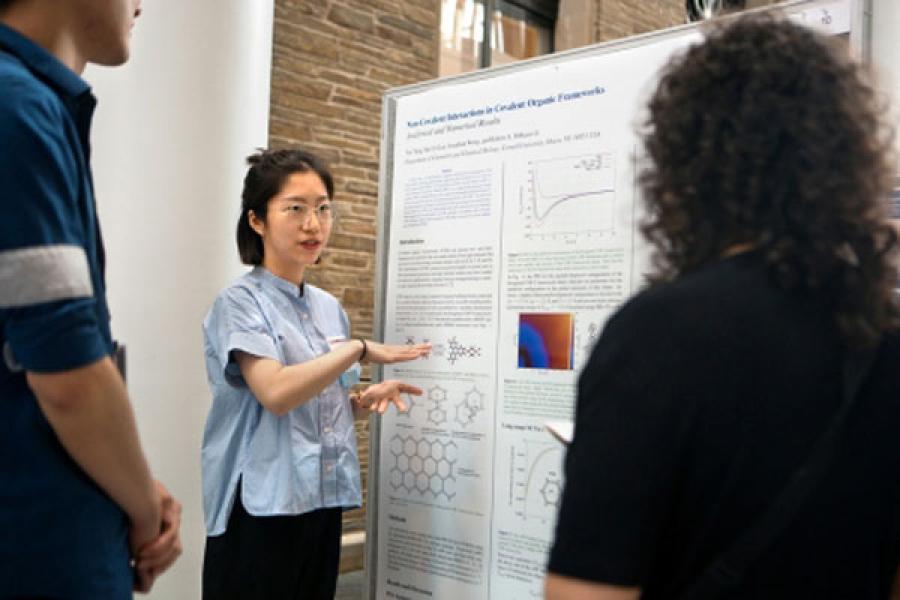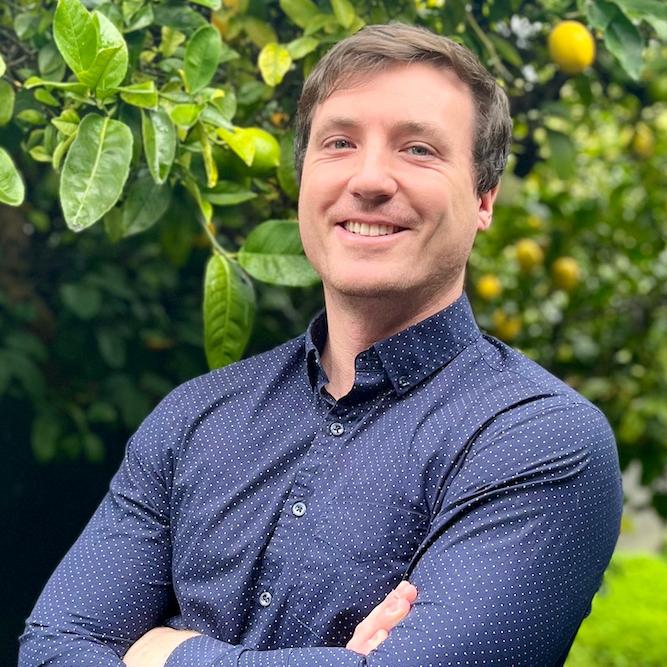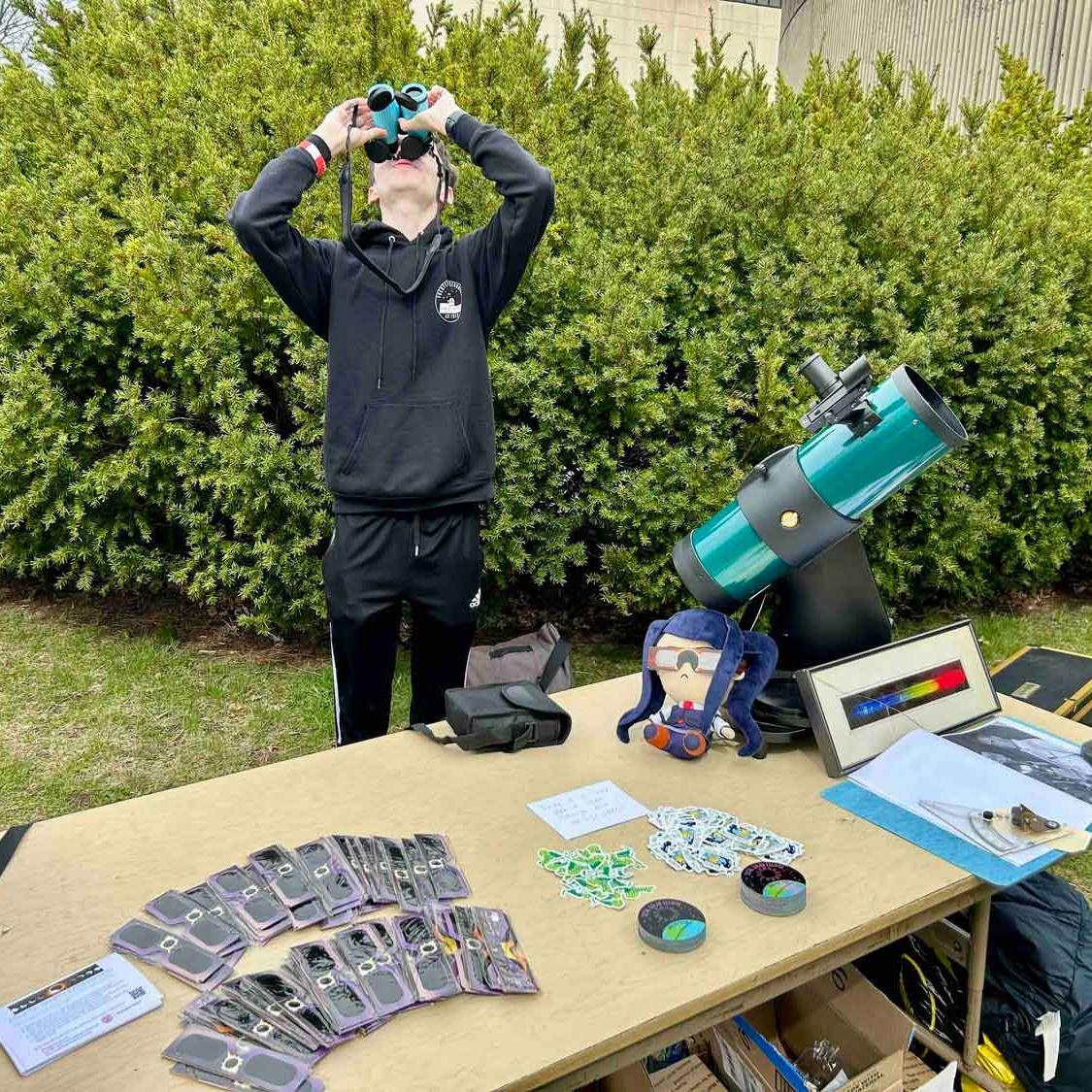Origami usually brings to mind folded paper cranes, but Cornell scientists see in origami the promise of nanoscale machinery. On June 16-17, the Cornell Center for Materials Research (CCMR) held a symposium in the Physical Sciences Building to explore using origami to create machines at the micron scale using atomically thin materials.
The symposium, “Atomic Origami: a Technology Platform for Nanoscale Machines, Sensors and Robots,” brought together experts from a wide range of origami-related fields with the goal of creating bridges, connections and possible collaborations, said conference co-organizer Itai Cohen, associate professor of physics in the College of Arts and Sciences. He noted that the 50-year-old CCMR, with its three interdisciplinary research groups involving 100 faculty across 12 departments and four colleges at Cornell, was an ideal host for the symposium.
CCMR is an interdisciplinary research center funded by the National Science Foundation and New York state to explore materials and advance them through fundamental, experimental and theoretical studies. CCMR also conducts educational outreach to teachers and students, industrial outreach and knowledge transfer, and operates shared instrumentation in support of materials research on and off campus, available to anyone who would like to participate.
The symposium was co-sponsored by Corning Inc. “It was wonderful to have the opportunity to listen to and interact with world-class experts in this fascinating field of origami research,” said Dan Vaughn, manager of external technology collaborations and intellectual assets at Corning. “CCMR continues to be a great partner because of the access they provide to world-class equipment, services and most importantly – people.”
Using the principles of origami, scientists are creating two-dimensional designs on polymers, metals and plastics using mathematics and, through folding, turning them into three-dimensional objects. The approach is powerful particularly because the mechanics are such that it scales both up and down, usually folding exactly the same way regardless of size.
“The scalability is the reason these kinds of paper arts are showing up all over the place: architectural scale structures, human scale, micron scale, flying robots, little polymer structures that swell or unswell, or even structures like solar panels deploying in space,” said conference co-organizer Paul McEuen, the John A. Newman Professor of Physical Science.
The symposium’s endowed Sproull lecture, “Origami Design for Static Structures and Dynamic Mechanisms,” was delivered by Robert J. Lang, a physicist and origami artist whose work has been shown worldwide, including the Louvre and the Metropolitan Museum of Modern Art. He’s created more than 500 patterns for folded objects and has been key in advocating the combination of mathematics with origami.
“This idea of being small for the journey, large for the destination has obvious applications for space, but also for the human body,” said Lang. “One medical device is a heart stent, based on an origami pattern, that can be threaded through the body until it reaches the blockage where it unfolds.”
Marc Miskin, a postdoctoral associate at Cornell, described the potential for micron-scale machinery in his talk, “2D Materials for the Fabrication of Micron-Sized, Autonomous Origami Machines.”
“It’s a platform for deploying micron scale machines with wide functional capacity,” said Miskin. “Using conventional lithography, each device could carry more processing power than Voyager and remain small enough for injection into the body. They’d be comparable in size to a biological machine. “
Said Cohen, “Although origami has many niche markets that it’s already influencing, our vision of making origami as an enabling platform for microscale robots is totally untapped.”
Yan Yang, a graduate student in the field of chemistry and chemical biology, explains her research on “Non-Covalent Interactions in Covalent Organic Frameworks.” Photo credit: Lindsay France, University Photography
The symposium’s poster session, which allows industry representatives to see the wide breadth of research related to CCMR, often triggers interest in collaborations by industry partners, noted Cohen, which happened again at this conference. To promote these collaborations, CCMR offers funding mechanisms for industry support, such as the Industrial Collaboration Program (ICP).
Xerox is one of the CCMR ICP partners, and area manager Chieh-Min Chang came to the symposium to look for opportunities that could be applied to Xerox applications. ““The origami concept is unique,” he said. “We’re interested in the research…as there’s probably some way we could design our material differently.”
Conference attendee Ulysses Jackson, a formulator with Golden Artist Colors, a small business that’s used the CCMR shared facilities, said he found the symposium very inspiring. “A lot of what I do is new product development and trying to think of new applications…it’s really interesting how much application I can see.”
“The entire conference had this spirit of pie-in-the-sky, let’s dream a little bit about where this could go,” said Cohen, who added that he was pleased by how willing participants were to present risky ideas in the brainstorming sessions. “We had everything from new sensors that changed their photonic properties based on chemical absorptions that could indicate rotting food, to little tiny robots that get injected into the cerebral-spinal fluid that can be used to interface with the brain.”
A version of this story also appeared in the Cornell Chronicle.






